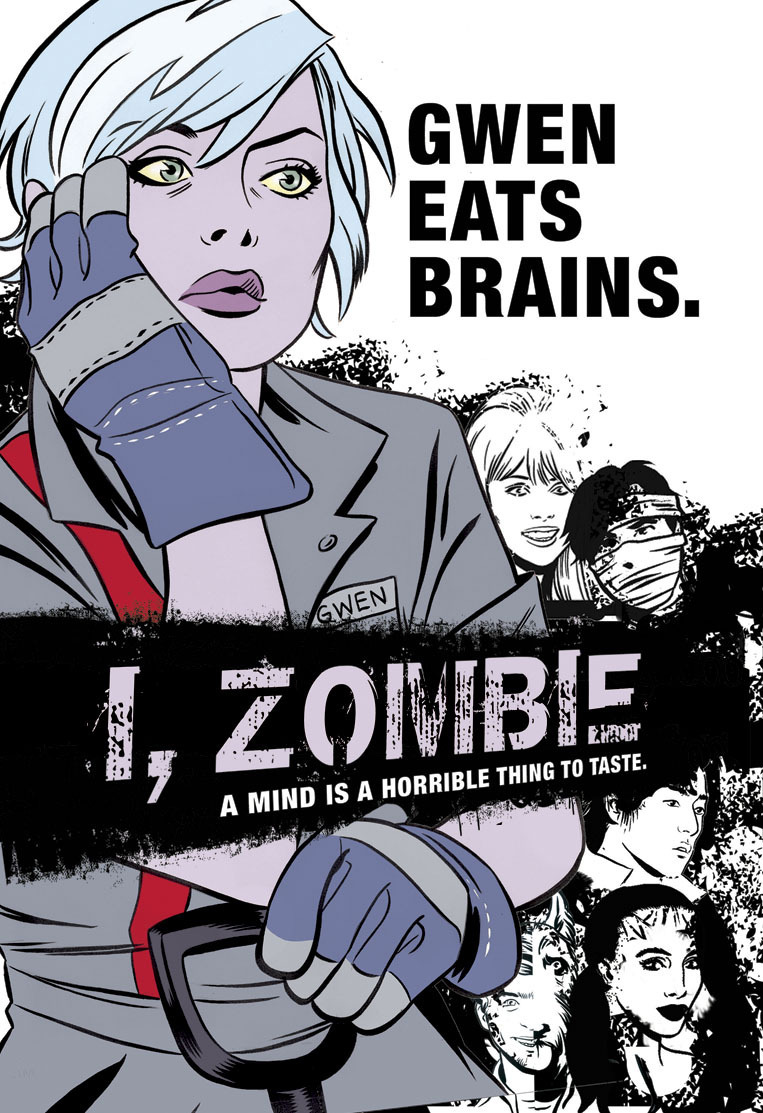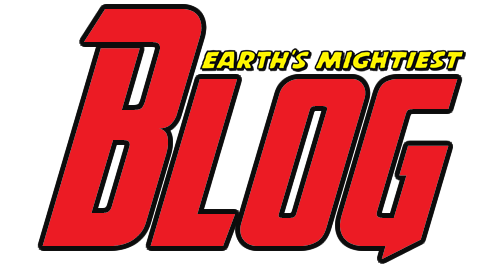
This post was originally published on my old site in 2012. I’m reprinting it here for posterity, with no changes.
With Karen Berger stepping down as one of the major forces behind Vertigo’s publications, I’ve seen quite a few “best of Vertigo” lists. But I’m here to tell you: I’m not qualified to make a top 10 Vertigo list. Plus, if I did, it wouldn’t include The Sandman, so you’d immediately discount anything I said as bull$hit. I’ve tried three times to get through Sandman Vol. 1, and I just can’t love it.
More importantly, it’s almost impossible to make an original top 10. There are so many creatively lauded, highly influential Vertigo books, how could you include, e.g., ten books like 100 Bullets, American Vampire, Grant Morrison’s Animal Man, V for Vendetta, Hellblazer, Shade the Changing Man, Scalped, DMZ, Fables, and the Invisibles, but then exclude ten titles like The Filth, Preacher, The Unwritten, A History of Violence, Transmetropolitan, Sweet Tooth, Y the Last Man, Demo, Tank Girl, and Grant Morrison’s Doom Patrol?
Obviously, a top 10 list is not enough. Even a top 20 might not be.
But what about all those “littler” Vertigo books that tend to go unnoticed? The ones that weren’t written by Grant Morrison, or somehow seemed to fly under everyone’s radar? There’s my niche!
Here it is, my…
TOP TEN VERTIGO BOOKS YOU MIGHT NOT HAVE HEARD OF…BUT SHOULD READ
10. NEVADA (1998)
When Steve Gerber left Marvel Comics, he did so with the greatest of litigious acrimony. He sued for the rights to Howard the Duck, and funded the action by creating Destroyer Duck (with Jack Kirby), who Gerber said is the “real” Howard the Duck. Then, he jumped over to Vertigo and continued a story from his old HtD days—inspired by a request from Neil Gaiman that Gerber develop more details around a random fight scene from an old HtD comic that featured a Vegas show girl and an ostrich.
Yes, it’s extremely odd.
I was going to put 2011’s Spaceman by the creative team behind 100 Bullets on this list, but I don’t think it’s really an under-the-radar book. But if Nevada is too weird for you, you can plug it into this list instead. It also made it on my “Best of 2012” list, so I don’t need to say much more about it.

9. THE ORIGINALS (2004)
When it comes to true graphic novels (as opposed to series that are later collected in trade books), most Vertigo fans will think of the recent Get Jiro or the award-winning Pride of Baghdad (which is, in fact, one of the greatest graphic novels of all time). But does anyone remember Dave “Watchmen” Gibbons’ update of rebel without a cause? This graphic novel about hipster gangbangers who ride flying motorcycles and call themselves The Dirt was a gripping page-turner that I never hear anyone talk about.

8. THE EXTERMINATORS (2006).
I reviewed this series already on my other site, and since then, nothing has changed my view that (at least the first few volumes of) this series are damn good comics. There’s a mixture of sci fi and realistic fiction here, as writer Simon Oliver and artist Tony Moore tell a black comedy about an exterminator service that has to fight a plague of super roaches and the big corporation that created them. There’s some great symbolism here, and some nice character work, but mostly this book is about plot and art. It’s the book that introduced me to Tony Moore, and for that I will be forever grateful.
7. A SICKNESS IN THE FAMILY (2010)

Vertigo’s “Crime” line was, on the whole, solid and dependable but not much more than that. They weren’t doing much with crime comics that weren’t being done better by Ed Brubaker and Sean Phillips. But A Sickness in the Family by Denise Mina, a writer of crime novels from Scotland, and Antonio Fuso, was the exception to that rule. The pacing of the book was as atypical as the subject matter: A slowly developing, extremely creepy story of a family arguing at the dinner table and then, gradually, destroying each other. It’s the kind of book you need to read twice, once to experience the story in a visceral way, and then again to see the layers and complexity underneath what at first seems to be Ordinary Dysfunctional People.
And if you’re looking for some more good Vertigo crime, also try Dark Rain: A New Orleans Story (2010) by Mat Johnson and Simon Gane. It’s actually a better book overall, but I think it got enough recognition that it doesn’t qualify as “under the bubble.”

6. ARMY@LOVE (2007)
Another bizarre entry to this list, written and drawn by an alum from the Alan Moore Swamp Thing days, Rick Veitch. It was about a National Guard unit in “Afbaghistan.” It came close to being “true fiction” in many ways, but focused on the love lives of the members of the unit, while raising issues of inequity between the rank-and-file and military leadership and the strain on soldiers and the families they leave behind.
5. UNDERCOVER GENIE (2003)
Kyle Baker is best known for his revelatory work on Plastic Man, and his offbeat, wholly original works like Why I Hate Saturn and The Cowboy Wally Show, but I have to say that none of that resonated with me on the level of this anthology. It’s a collection of random doodles and drawings, all-too-brief insights on human natures, two- or three-panel sequences, celebrity caricatures…It’s like a Kyle Baker Tumblr for folks with short attention spans.

And it’s fun (and funny) as hell.
4. FIGHT FOR TOMORROW (2002)
I suppose some folks will tell me I’m common in my tastes, but I thought that this book by Brian Wood and the great Denys Cowan was one of the best martial arts comics I’ve ever read. Karate comics are very difficult to pull off. I can only think of three others that really worked really well, and those would be Brubaker, Fraction and Aja’s Iron Fist, the issue of Howard The Duck about Quak Fu, and Doug Moench’s run on Master of Kung Fu (which worked maybe half the time). This was a really good miniseries. It didn’t change comics or push the envelope, it just told a great story.
3. I, ZOMBIE (2010)


This book by Chris Roberson and Mike Allred was scandalously missing from every single Vertigo top ten list I read. Makes me wonder if comic book critics have a sense of humor—or if they got the joke. I grant you that this Eisner-winning series ended too abruptly, but whose fault was that? Answer: DC Comics, who refused to give the creators enough props and respect. The book was a romance comic about a zombie who, when she eats brains, is able to keep her wits about her and pass as a living girl. Every traditional monster in the book reexamined that creature’s mythology in a new, slightly askew way. This comic turned horror conventions on their ear—the same way another cult classic that never resonated with a wide audience did: Buffy the Vampire Slayer.
2. THE UNKNOWN SOLDIER (2008)

The Eisner-nomiated version of this golden age DC character was a radically different kind of comic. It had action and violence, but it was remarkably politically savvy without being preachy. It wasn’t even obviously left- or right-wing. Created by Joshua Dysart and Alberto Ponticelli, it focused on an African American doctor providing humanitarian relief in war-battered Uganda who becomes possessed by the spirit of the Unknown Soldier and takes it upon himself to work with an alcoholic CIA outcast to try to kill the worst of the pillaging tribal forces. It was dark, powerful, incredibly suspenseful, and very moving as well—particularly the final storylines focusing on a young boy affected by the conflicts and the title character’s attempts to reunite with the wife he left behind.
The book was cancelled due to low readership, which is a damn shame. I’m including shame on me there, because I didn’t start reading it until there were several trade volumes already collected. Now you can get them all pretty cheap off Amazon. I suggest you do it. Now.
1. YOUNG LIARS (2008)

I won’t go on for days about David Lapham’s 2008 book about a bunch of young hipsters and their deep dark secrets. Just trust me: You’ll never figure it out until you’re done reading, and when you’re done you’ll be furious that there isn’t more.
